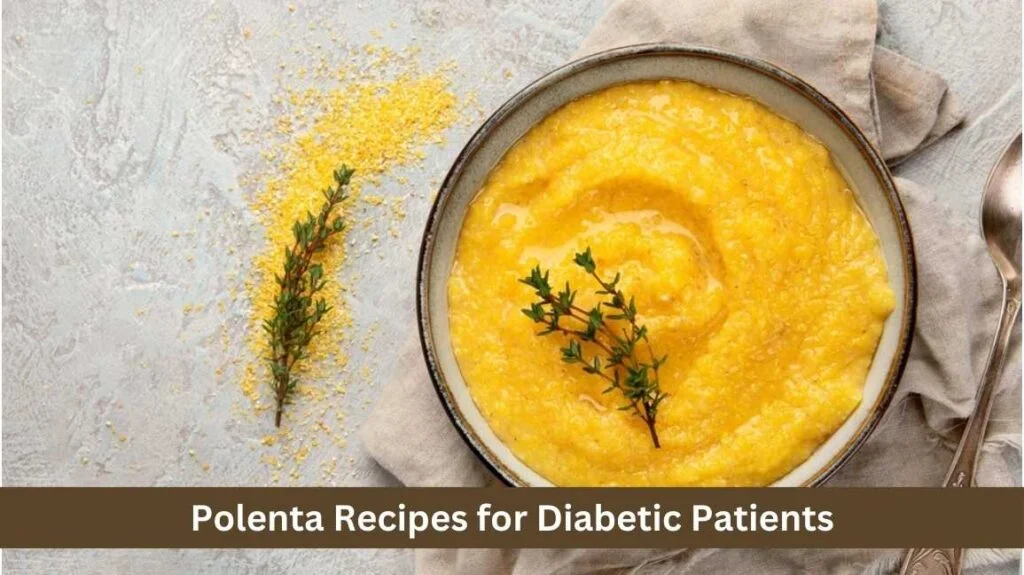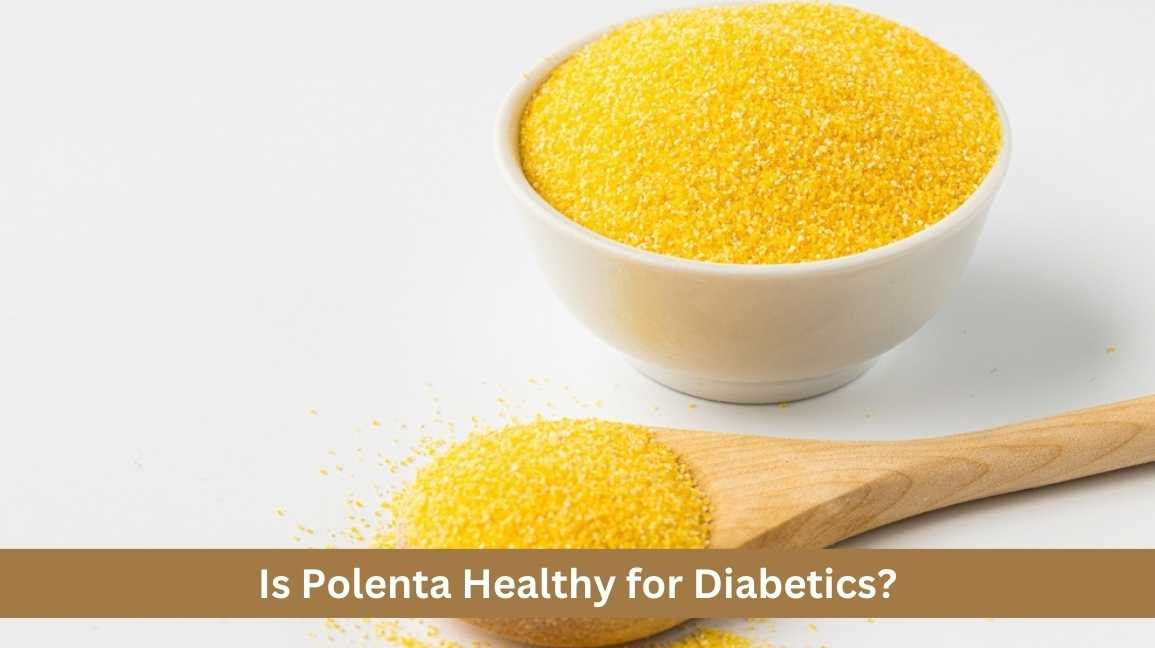Polenta is a popular dish made from coarse ground cornmeal and can be found in cuisines all over the world. But for people with diabetes, the question remains: Is polenta healthy? In this article, we will discuss the nutritional value of polenta and its potential impact on blood sugar levels.
What is Polenta?
To better understand if polenta is healthy for diabetics, it’s essential to first know what it is. Polenta originated in Northern Italy and has since become a staple food in many cultures. It’s typically made by boiling cornmeal in water or milk until it reaches a thick consistency, similar to porridge.
The cooked polenta can then be served as a creamy base for various toppings or allowed to cool and solidify into cakes that can be grilled, baked, or fried.
Nutritional Value of Polenta
Polenta is primarily made of cornmeal, which is a good source of carbohydrates, fiber, and various vitamins and minerals. The exact nutritional value may vary depending on the type of cornmeal used and how it’s prepared.
Here is an overview of the nutrition in one cup (cornmeal cooked with water):
- Calories: 145
- Carbohydrates: 31 grams
- Fiber: 2 grams
- Fat: 1 gram
- Protein: 3 grams
In terms of micronutrients, polenta is a decent source of iron, magnesium, phosphorus, and thiamine.
Is Polenta a Healthy Option for Diabetics?
The short answer is yes, polenta can be a healthy option for diabetics. It’s relatively low in calories and fat and contains a good amount of fiber, which is beneficial for managing blood sugar levels.
However, some factors to consider before adding polenta to your diet:
1. Select the right type of cornmeal: When buying cornmeal for making polenta, opt for stone-ground or whole-grain varieties instead of refined ones. These types contain more nutrients and have a lower glycemic index (GI) – a measure of how quickly food raises blood sugar levels.
2. Watch portion sizes: Polenta may be high in carbohydrates, and therefore calories, so it’s vital to keep an eye on your serving sizes. Instead of a large bowl of creamy polenta, try incorporating smaller portions as part of a balanced meal.
3. Be mindful of toppings: Polenta can be a blank canvas for various toppings, some healthy and others not so much. For example, adding lean proteins like grilled chicken or vegetables can make it a more nutritious option. On the other hand, toppings high in fat and sodium can negatively impact blood sugar levels.
Health Benefits of Polenta for Diabetics
Apart from its nutritional value, polenta may have several health benefits for diabetics, including:
1. Lowering cholesterol levels: Studies have shown that the high fiber content in cornmeal can help reduce LDL (bad) cholesterol levels, which is beneficial for people with diabetes who are at a higher risk of heart disease.
2. Providing energy without spiking blood sugar levels: The complex carbohydrates in polenta provide a slow and steady release of glucose into the bloodstream, helping to prevent spikes in blood sugar levels.
3. Aiding digestion: The fiber and resistant starch in polenta can promote healthy digestion and help regulate bowel movements, which is essential for maintaining overall health.
4. Gluten-free option: For people with diabetes who also have celiac disease or gluten sensitivity, polenta can be a safe and satisfying gluten-free alternative to other grains like wheat.
5. Versatility in cooking: Polenta is a versatile ingredient that can be incorporated into many dishes, making it easier to follow a healthy and varied diet.
Potential Drawbacks of Polenta for Diabetics
Despite its benefits, there are some potential drawbacks of polenta for diabetics, including:
1. High carbohydrate content: While polenta offers complex carbohydrates, it is still relatively high in carbs. Consuming large portions can lead to higher blood sugar levels, which is why portion control is essential.
2. Glycemic index variability: The glycemic index of polenta can vary depending on the type of cornmeal and the method of preparation. Some preparations may result in a higher GI, which could affect blood sugar levels more significantly.
3. Low protein content: Polenta is relatively low in protein, which is important for blood sugar regulation and maintaining muscle mass, especially for diabetics. Combining polenta with protein-rich foods can help mitigate this issue.
4. Potential for unhealthy toppings: While polenta can be paired with nutritious toppings, it is often served with high-fat, high-sodium ingredients like cheese, butter, and processed meats. These can counteract the health benefits and negatively impact blood sugar control.
5. Possible nutrient deficiencies: Cornmeal-based polenta lacks some essential nutrients found in other grains and legumes, such as certain vitamins and minerals. Diversifying the diet with a variety of whole foods can help ensure balanced nutrition.
Polenta Recipes for Diabetic Patients

Herb and Garlic Polenta with Roasted Vegetables
Ingredients:
- 1 cup stone-ground or whole-grain cornmeal
- 4 cups water or low-sodium broth
- 1 tablespoon olive oil
- 2 cloves garlic, minced
- 1 tablespoon fresh rosemary, chopped
- Salt and pepper to taste
- Assorted vegetables (such as bell peppers, zucchini, and cherry tomatoes), roasted
Instructions:
- In a large pot, bring the water or broth to a boil. Gradually whisk in the cornmeal, reducing the heat to low.
- Continue to cook, stirring frequently, until the polenta thickens, approximately 30-40 minutes.
- In a separate pan, heat the olive oil over medium heat. Add the minced garlic and rosemary, cooking until fragrant.
- Stir the garlic and rosemary into the polenta and season with salt and pepper to taste.
- Serve the polenta warm, topped with roasted vegetables for a nutritious and balanced meal.
Grilled Polenta Cakes with Tomato-Basil Salsa
Ingredients:
- 1 cup stone-ground or whole-grain cornmeal
- 4 cups water or low-sodium broth
- Salt and pepper to taste
- 2 tablespoons olive oil
- 2 cups cherry tomatoes, halved
- 1/4 cup fresh basil, chopped
- 1 clove garlic, minced
- 1 tablespoon balsamic vinegar
Instructions:
- In a large pot, bring the water or broth to a boil. Gradually whisk in the cornmeal, reducing the heat to low.
- Cook, stirring frequently, until the polenta thickens, approximately 30-40 minutes.
- Pour the polenta into a baking dish and allow it to cool and solidify, for about 1 hour.
- Once firm, cut the polenta into squares or rounds. Brush each piece with olive oil.
- Preheat a grill or grill pan to medium-high heat. Grill the polenta cakes until they are crispy and have grill marks, about 4-5 minutes per side.
- In a bowl, combine the cherry tomatoes, basil, garlic, and balsamic vinegar. Season with salt and pepper.
- Serve the grilled polenta cakes topped with the tomato-basil salsa for a fresh and flavorful dish.
These recipes are designed to be both delicious and suitable for diabetics, allowing them to enjoy the versatility of polenta while managing their blood sugar levels.
Tips for Incorporating Polenta into a Diabetic Diet
- Choose stone-ground or whole-grain polenta for a higher fiber and nutrient content.
- Control portion sizes and pair polenta with protein-rich foods to help balance blood sugar levels.
- Experiment with different cooking methods, like grilling or baking, to create flavorful dishes without adding extra fat.
- Use fresh herbs and spices instead of high-sodium seasonings to enhance the taste of polenta.
- Incorporate plenty of vegetables into polenta-based meals for added fiber, vitamins, and minerals.
Conclusion
In conclusion, polenta can be a healthy and delicious addition to a diabetic diet, offering benefits such as slow-releasing energy, aiding digestion, and providing a gluten-free option. However, it is essential to be mindful of portion sizes and potential drawbacks such as high carbohydrate content and variability in glycemic index.
Key Takeaways
- Polenta is a low-fat, low-sugar, and cholesterol-free grain that can be beneficial for people with diabetes.
- It offers complex carbohydrates, fiber, and resistant starch, aiding digestion and promoting healthy bowel movements.
- Its versatility in cooking makes it easier to follow a varied and nutritious diet.
- However, polenta can have high carbohydrate content and variability in glycemic index, so portion control and pairing it with protein-rich foods are important.
- Choosing whole-grain or stone-ground polenta and incorporating plenty of vegetables can help balance out any potential drawbacks.
FAQs
Is polenta high in carbohydrates?
Yes, polenta is relatively high in carbohydrates, so portion control is essential for people with diabetes.
Is there a difference between instant and traditional polenta?
Yes, instant polenta has been partially cooked and dehydrated, while traditional polenta comes from ground whole-grain corn and takes longer to cook. Instant polenta may have a higher glycemic index due to the processing.
Can I use any type of cornmeal for polenta?
Yes, however, choosing stone-ground or whole-grain cornmeal is recommended for a higher fiber and nutrient content.
Is polenta gluten-free?
Yes, polenta is naturally gluten-free because it’s made from ground corn. However, some brands may add wheat flour, so it is essential to check the label.
Can polenta cause blood sugar spikes?
It depends, polenta has a lower glycemic index compared to other grains, but it is still important to monitor portion sizes and pair it with protein-rich foods to prevent blood sugar spikes.
Useful Resources
Danahy, A. (2020, June 2). Polenta: Nutrition, calories, and benefits. Healthline Media. Healthline- polenta
Diabetes – Symptoms and causes. (2024, March 27). Mayo Clinic. Mayo Clinic- Diabetes
Disclaimer
This article is provided for informational purposes only and should not be regarded as a replacement for professional medical advice, diagnosis, or treatment. For any medical concerns, always consult a qualified healthcare provider for guidance. Do not ignore or delay seeking professional advice because of something you have read here. While we aim to ensure the information provided is accurate and up-to-date, we make no guarantees regarding its completeness, accuracy, reliability, or suitability for any purpose. You are responsible for how you use this information, and you assume all risks associated with it. We are not responsible for any outcomes resulting from the use of this content.
READ MORE ARTICLES
